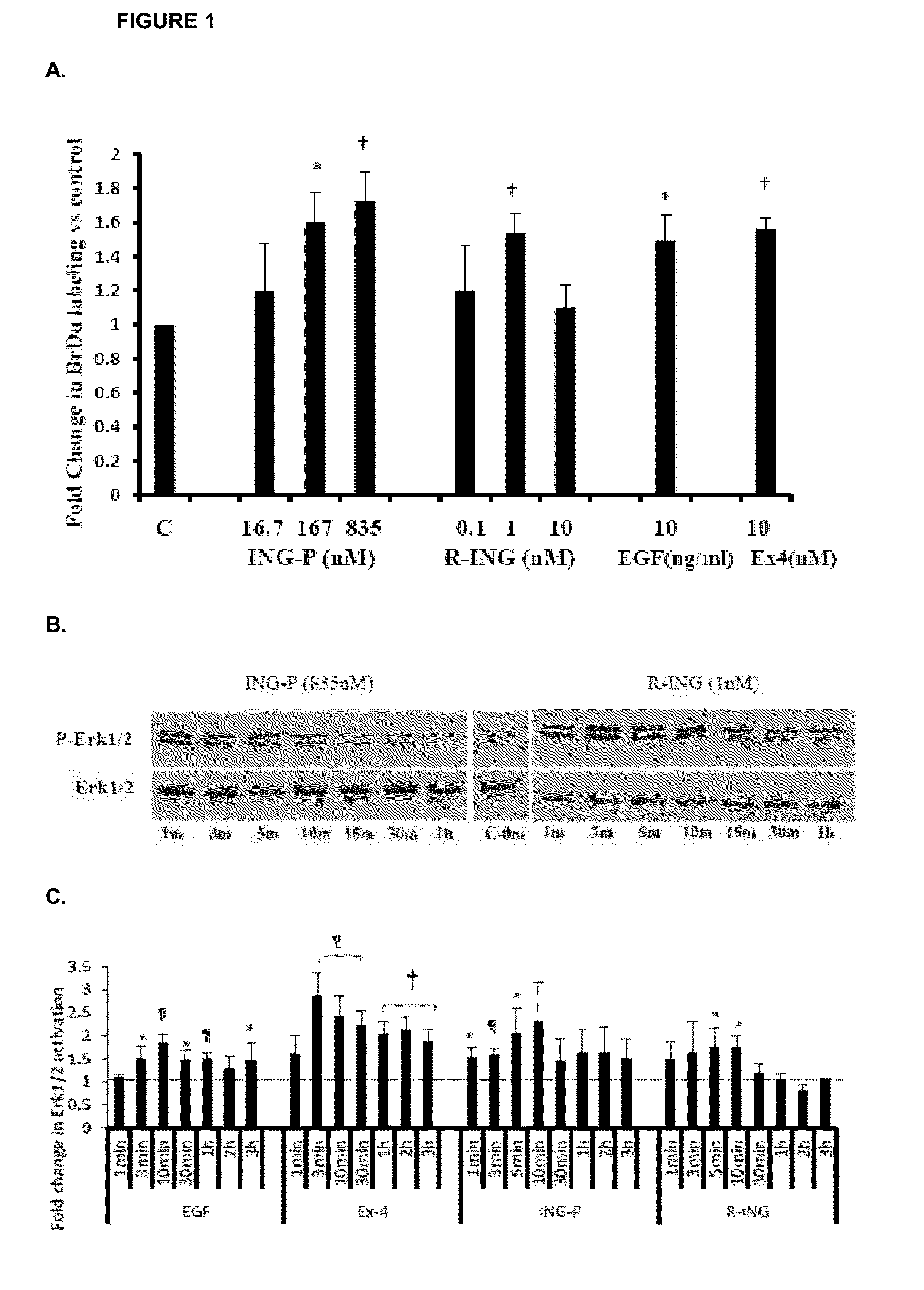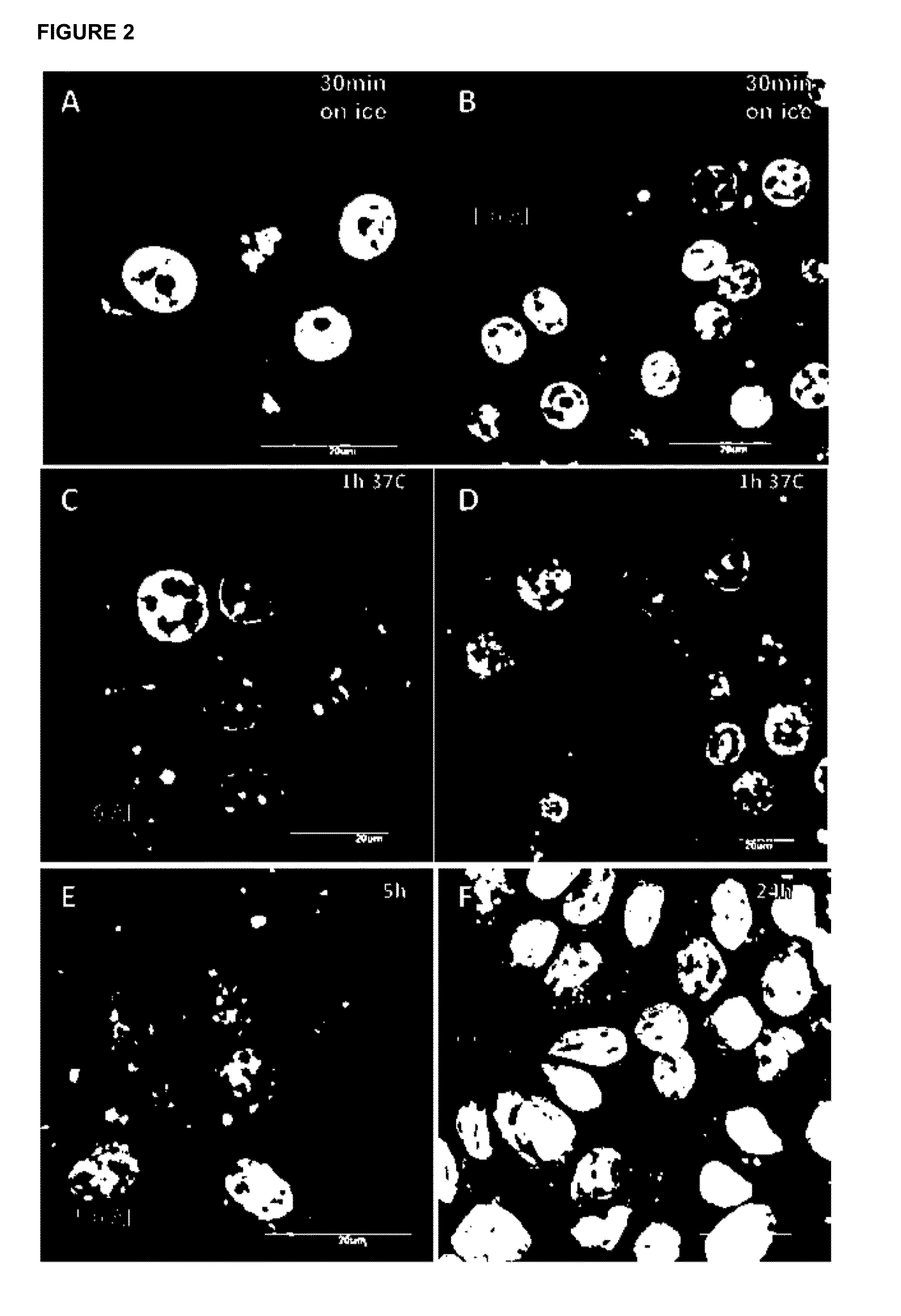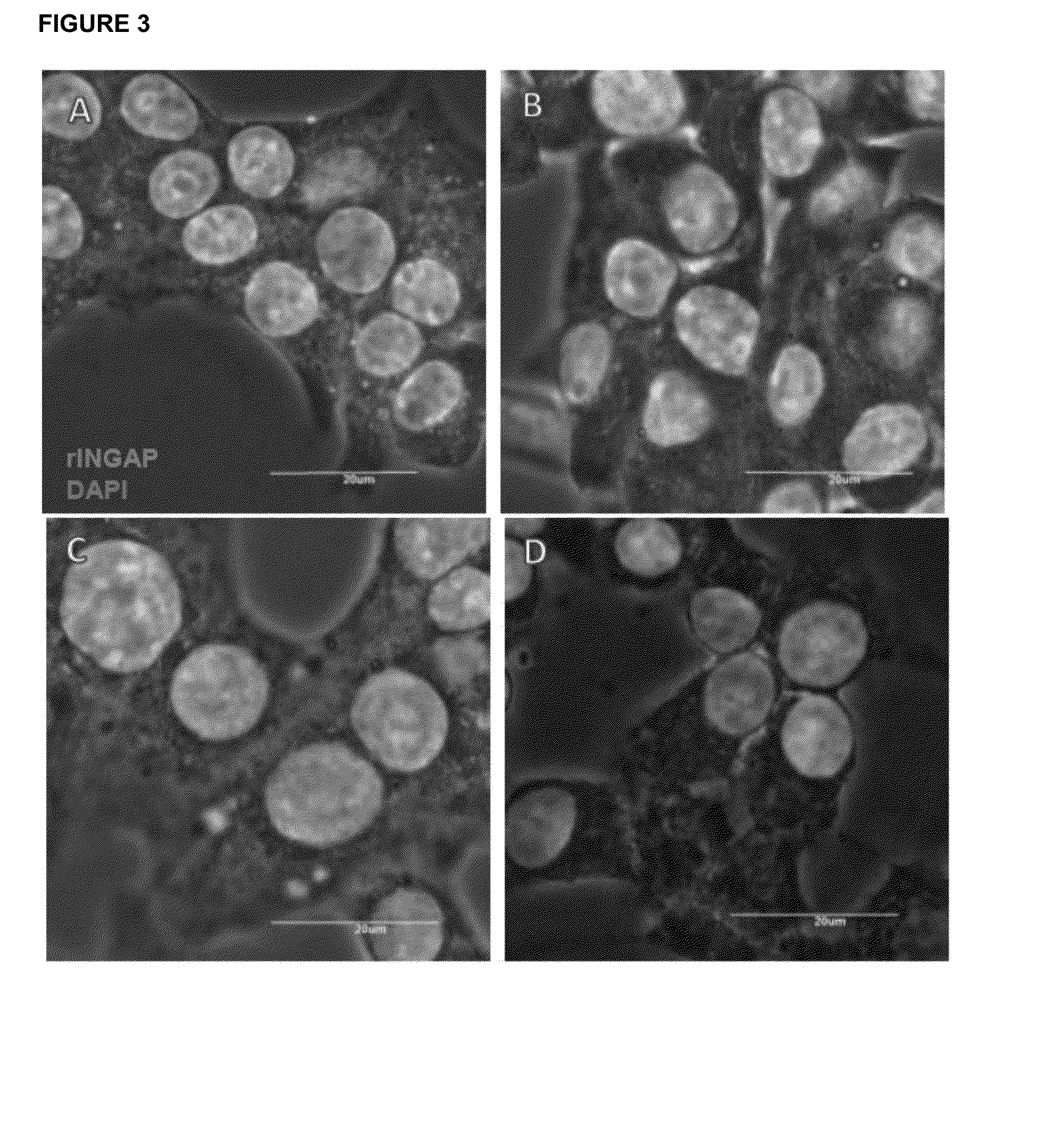Modified ingap peptides for treating diabetes
a technology of ingap peptides and insulin, which is applied in the field of ingap peptides, can solve the problems of the relatively short half-life of ingap peptides, which continues to present challenges, and achieves the effects of preventing or inhibiting -cell apoptosis, restoring the functionality of pancreatic cells, and increasing plasma insulin levels
- Summary
- Abstract
- Description
- Claims
- Application Information
AI Technical Summary
Benefits of technology
Problems solved by technology
Method used
Image
Examples
example 1
INGAP-P and r-INGAP Dose-Dependently Increase Proliferation of RIN-m5 F Cells
[0151]Although pancreatic ductal cells have been understood to be a particular target of INGAP (Rosenberg, L., et al., 1988, Diabetes, 37: 334-341; Pittenger, G. L., et al., 2007, Pancreas, 34: 103-111), a number of studies including results of clinical trials suggest that β-cells are also responsive to INGAP stimulation. To study effects of INGAP on β-cells we used RIN-m5 F, a rat insulinoma cell line, commonly used as a β-cell surrogate in vitro (Cozar-Castellano, I., et al., 2008, Diabetes, 57: 3056-3068). Although no significant effect on insulin expression was observed in our experiments, the data showed that both INGAP-P and r-INGAP dose dependently induced BrdU incorporation in RIN-m5 F cells after 24 h (FIG. 1A), with the most effective concentrations being 1 nM for r-INGAP (1.5× increase compared to negative control, which was treatment with PBS (equal to 1)) and 835 nM for INGAP-P (1.8× increase c...
example 2
r-INGAP and INGAP102-120 Bound RIN-m5 F Cells form Cluster-Like Complexes on the Cell Surface, Whereas INGAP104-118 Rapidly Internalizes into the Cytoplasm
[0154]To determine how INGAP binds and internalizes into RIN-m5 F cells, we used r-INGAP labeled with fluorescent reactive dyes DyLight −488 (green) and −594 (red) and 5-FAM-labeled INGAP-P. As shown in FIG. 10, 50n M DyLight-488 r-INGAP bound the cell surface of RIN-m5 F cells within minutes and formed small clusters and patches on the cell surface, resembling the crosslinking of membrane multiprotein complexes described for other ligands. This was observed both at 37° C. and on ice, which suggests high affinity receptor binding. This is different from a homogeneous staining exhibited by Cholera Toxin B (CTB, AlexaFluor 594) and Transferrin (Texas Red, both from Invitrogen) that were used as positive markers for caveolin and clathrin mediated endocythosis (FIG. 2A, B). Although first signs of internalization were observed after 1...
example 3
Erk½ Activation
[0160]To compare the potency of 19-mer extended peptides (19-mer seq1, seq2 and seq3; see Table 1) and the 15-mer INGAP-P peptide (see Table 1), Erk½ activation was measured in RINm5 F cells. Results are shown in FIG. 18. Data presented in FIG. 18 show that 19-mer seq3 was 3 times more potent in Erk½ activation in RIN cells, compared to 15-mer INGAP-P peptide and the 2 other 19-mer sequences, when tested at the same concentration. 19-mer seq3 was about 2.5 times more potent at the 1× concentration than the 15-mer peptide at the 10× concentration, suggesting higher efficiency of the 19-mer seq3 peptide.
[0161]Activation of Erk½ may be mediated by a number of signaling cascades initiated at the cell membrane level by receptor tyrosine kinases (RTK) or by different classes of G-protein coupled receptors (GPCRs). These signaling cascades include PKC, PKA, PI3 K or Ras / Raf-dependent pathways. Since the nature of the INGAP receptor is unknown, we screened for both RTK and GP...
PUM
| Property | Measurement | Unit |
|---|---|---|
| Fraction | aaaaa | aaaaa |
| Fraction | aaaaa | aaaaa |
| Fraction | aaaaa | aaaaa |
Abstract
Description
Claims
Application Information
 Login to View More
Login to View More - R&D
- Intellectual Property
- Life Sciences
- Materials
- Tech Scout
- Unparalleled Data Quality
- Higher Quality Content
- 60% Fewer Hallucinations
Browse by: Latest US Patents, China's latest patents, Technical Efficacy Thesaurus, Application Domain, Technology Topic, Popular Technical Reports.
© 2025 PatSnap. All rights reserved.Legal|Privacy policy|Modern Slavery Act Transparency Statement|Sitemap|About US| Contact US: help@patsnap.com



